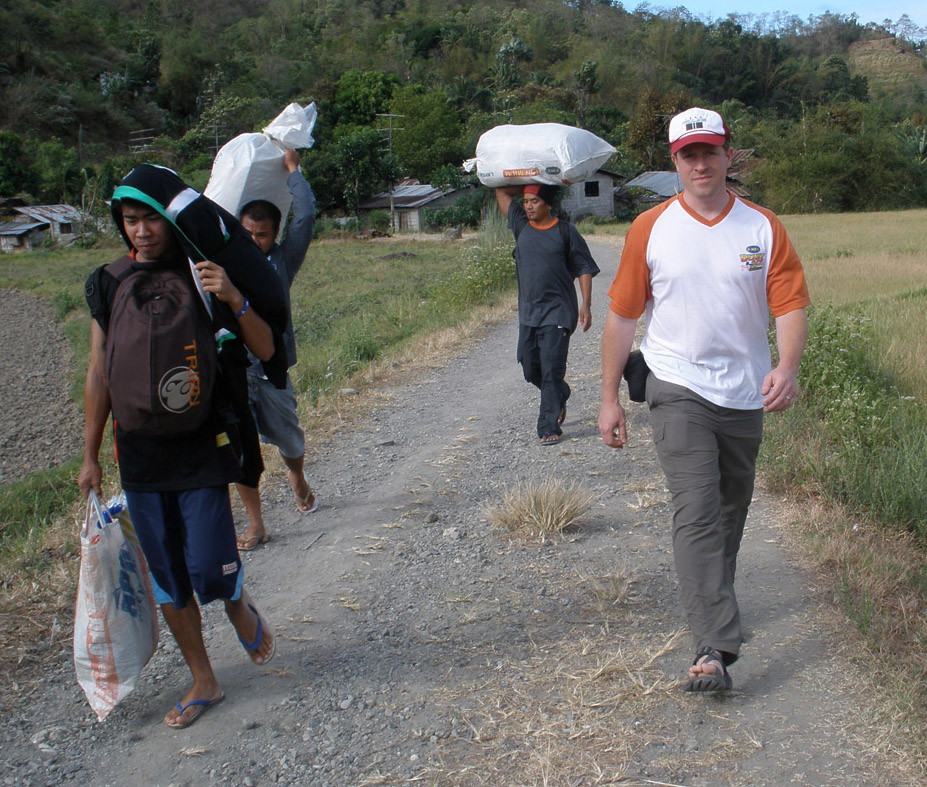Some Photos Taken During Field Work in the Philippines
December 31 - January 1, 2010
Panay Island, Antique Province, Valderrama area
Pieter Pelser and Julie Barcelona,
the dynamic duo of Philippine botany, husband and wife, residing in New
Zealand. Julie was born and raised on Panay Island and without her all
of the logistics for our field work would have been nearly impossible.
This photo was taken early in the morning as we prepared to make the
drive to Valderrama from Sibalom (both on west side of island) where her sister and brother-in-law
live.
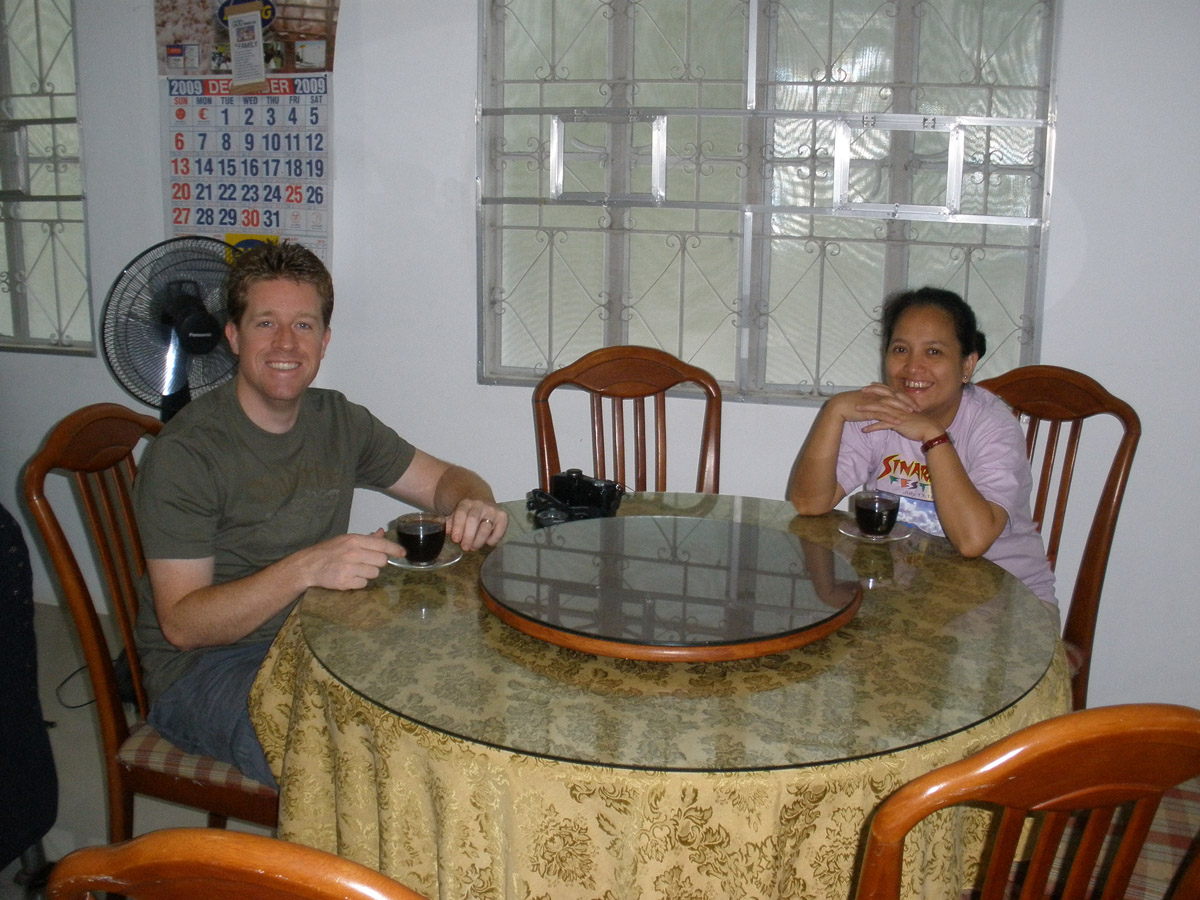
Our botanical goal was to collect material of a plant called Rafflesia
(see photos below). After parking the vehicle, there was still a long
way to hike up into the mountains to get to the place this plant grows.
Because we planned to camp a couple of nights, we needed to carry
lots of supplies, which required the help of porters.
Pieter and Julie on the trail.
Note that this habitat has been greatly impacted by people who
have cleared the forest, leaving only introduced (invasive) grasses or
even just rock in some places.
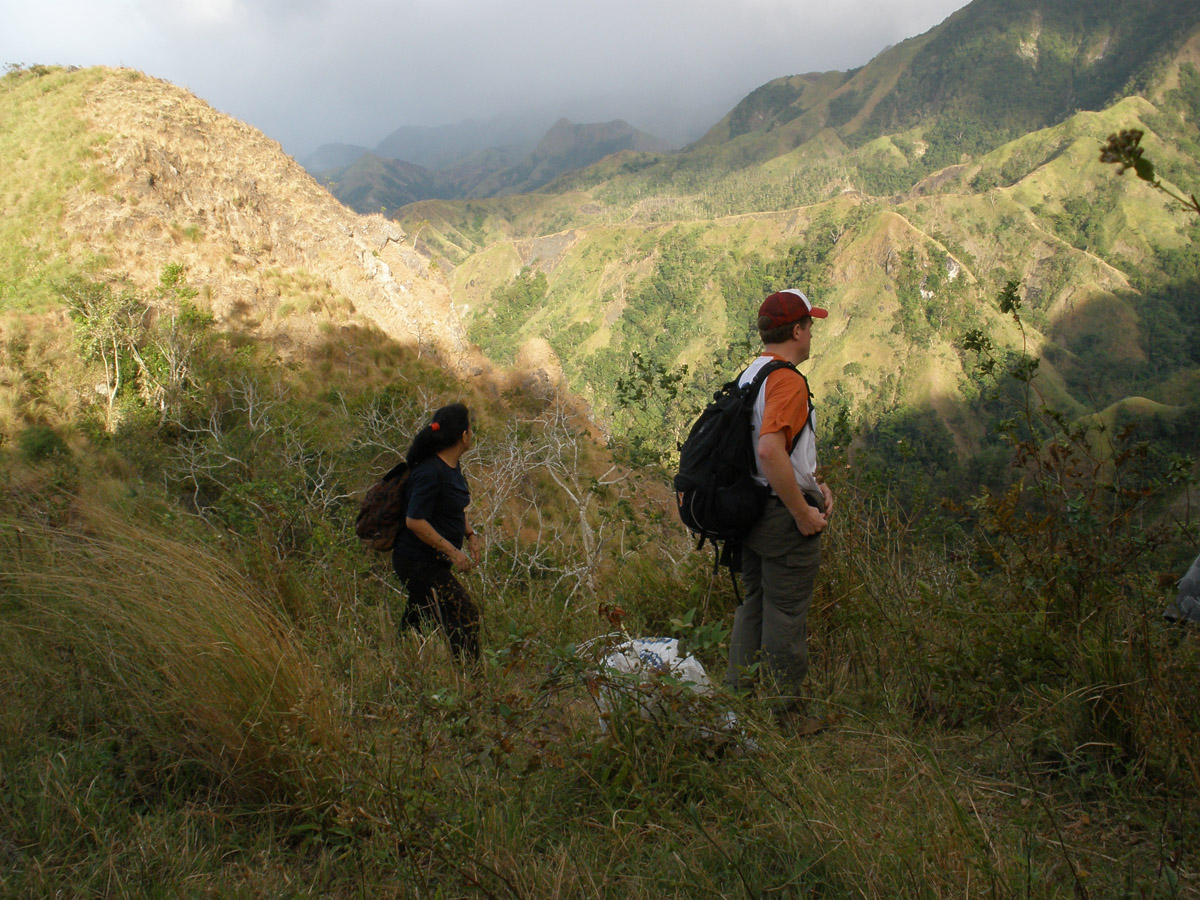
The photos below show the extent of
the deforestation. More and more land is cleared and converted to rice
paddy, sometimes requiring terraces to allow agriculture. But without
the tree root systems, rains wash away the fragile soil. You can see
that the river, swollen from recent rains, is brown with the eroded
silt that came down from the mountains. The flooding after rains is now
much worse than before where adjacent rice paddies have been washed
away.
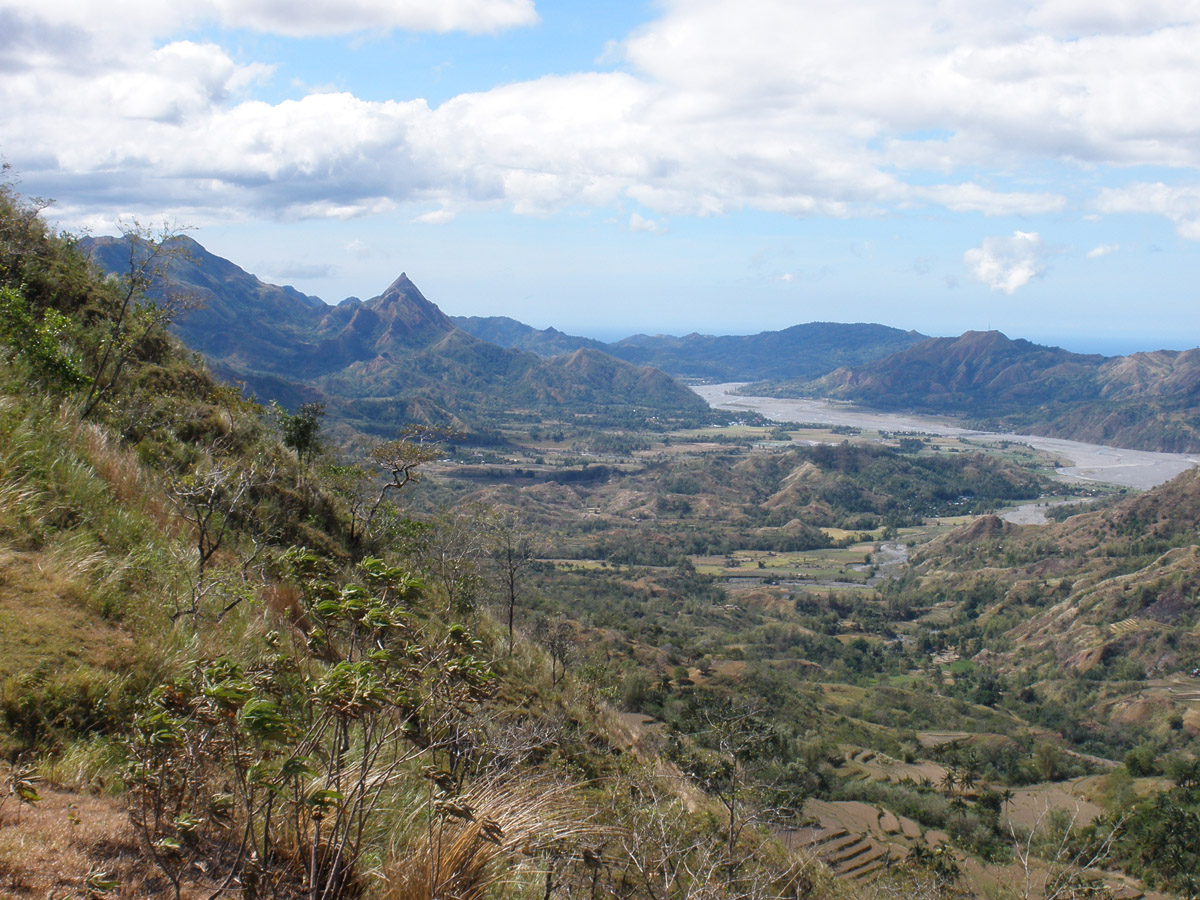
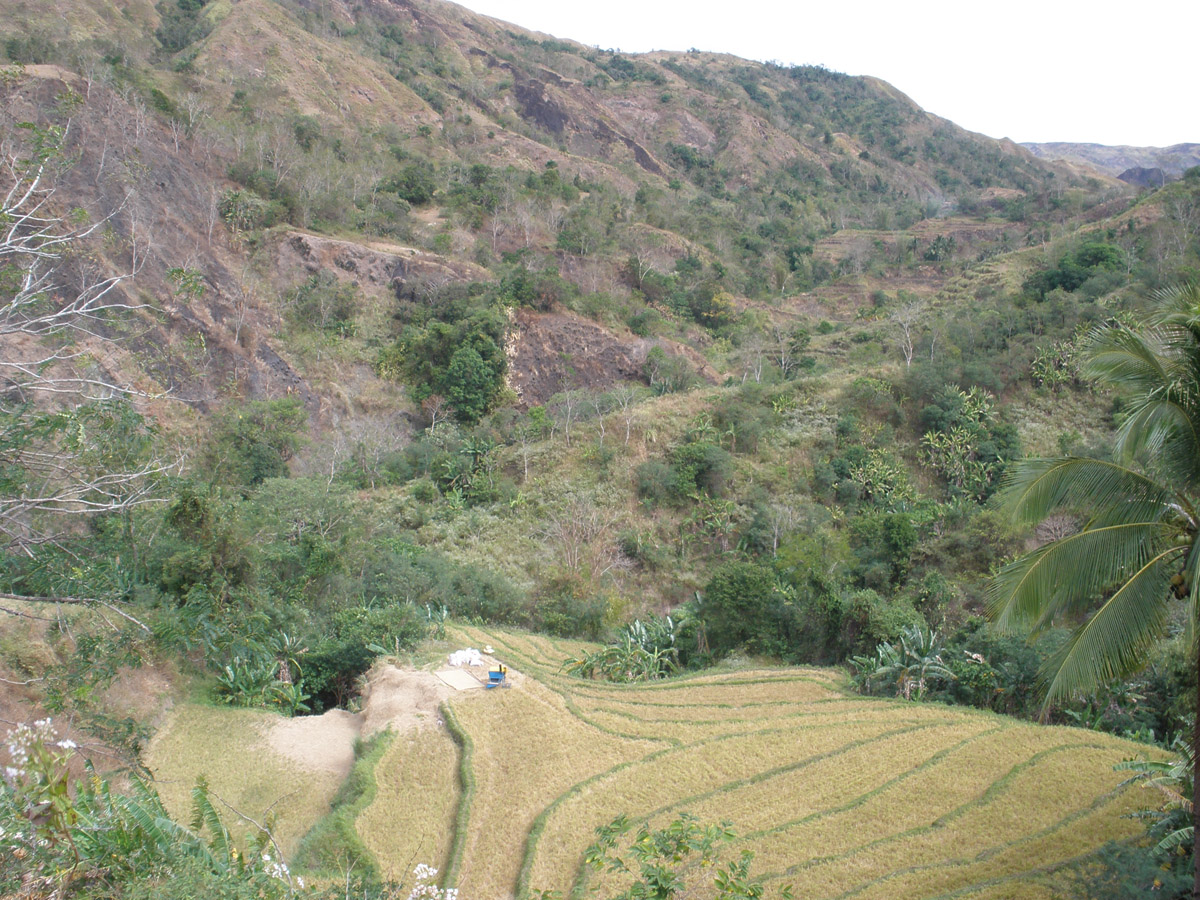
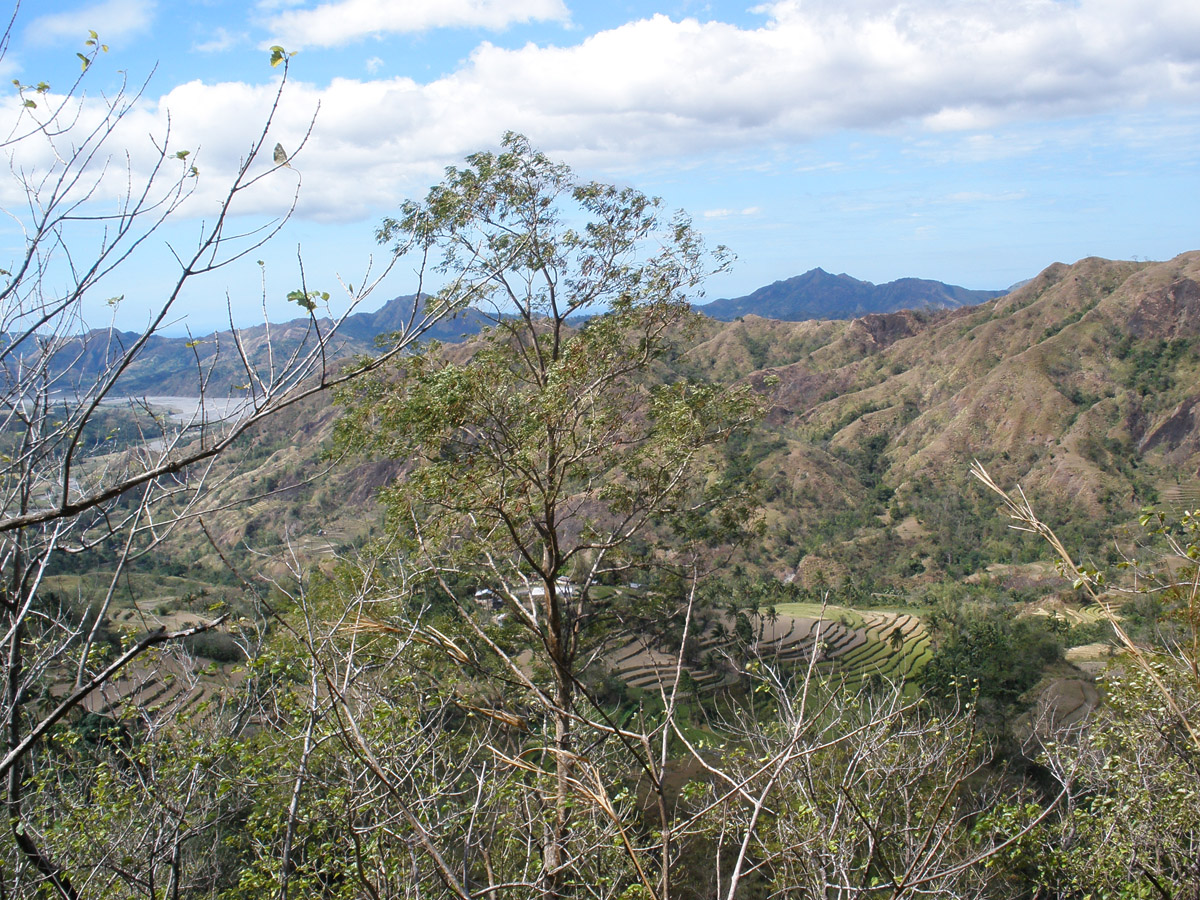
In this spot where the trees were
cleared, the land could take no more and a massive landslide occurred.
While hiking, our porters were constantly chopping down any trees
they saw with their parangs (equivalent to machetes). We
pointed out the landslide and tried to emphasize that the lack of trees
caused this, but they were not very receptive to the message.
They also liked starting fires in the grass that also kills the
trees. A number of times I stomped out the fires with my boots!
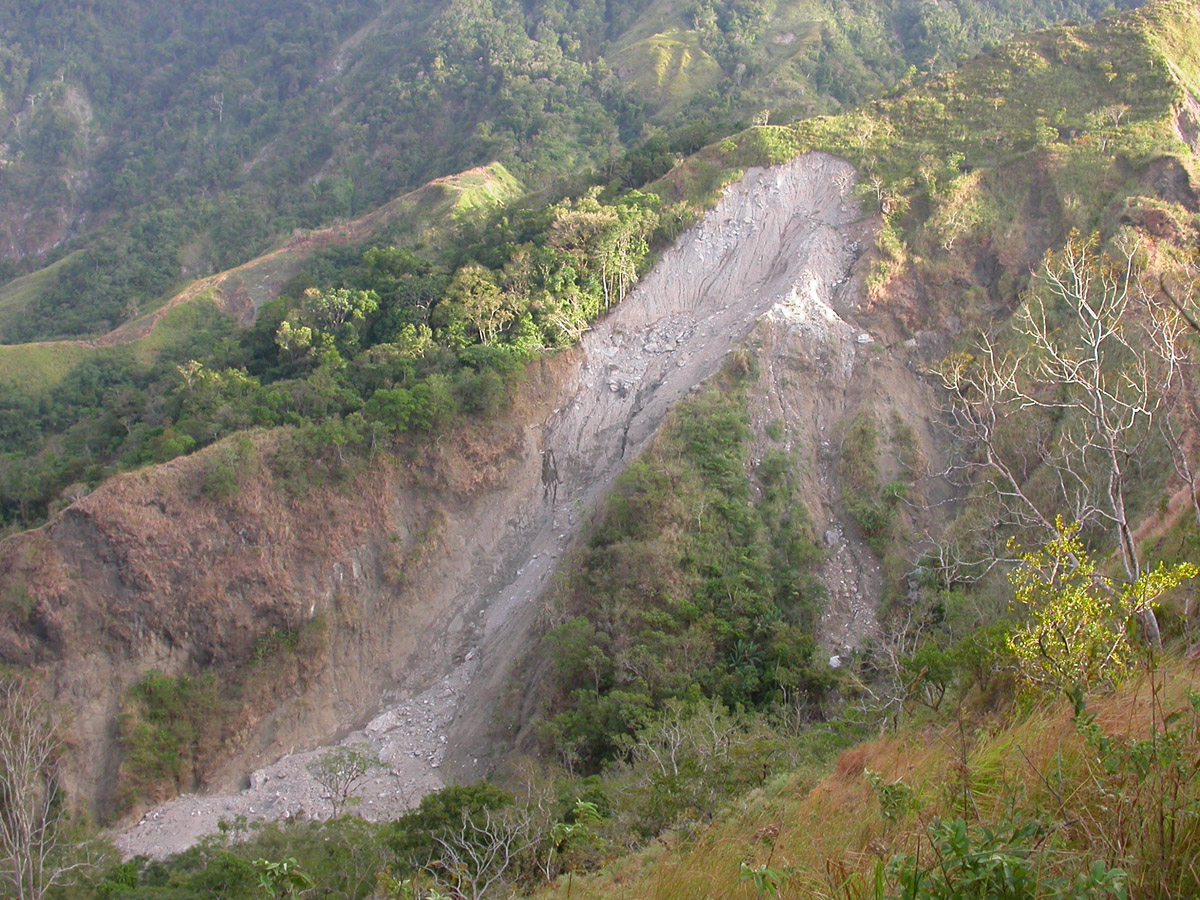
Above I mentioned logistics.
In the Philippines, not only do you need memoranda of agreement with
the DENR (Dept. Environment and Natural Resources), you need general
and specific collecting permits. One must pay "courtesy calls" to
the local mayor to be allowed into some areas. And one must meet
with the Barangay captains. That's who's shown here, with one of
the ubiquitous children. Julie was explain what the crazy
scientists are doing here.
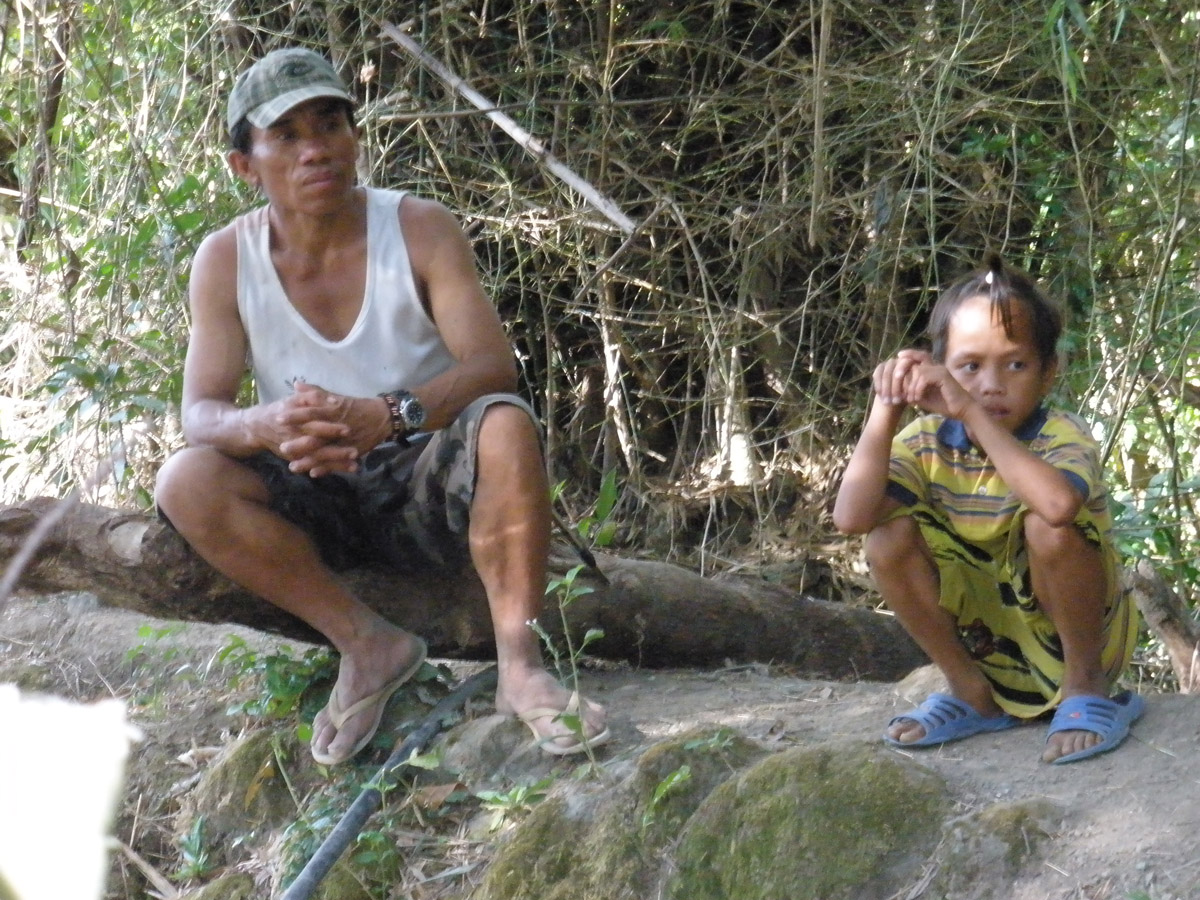
As mentioned, the children
were everywhere around us when we approached a small village. They were
of course curious about the parade of people marching up the trails
that they use every day. The hike was quite strenuous for me
given the heat and incline. But these kids ran up and down the trails
effortlessly. Oh to be young again! The animals in the pool are called
carabao - a type of domesticated water buffalo that is native to the
Philippines. As a draught animal, it serves many functions,
especially pulling plows and carts.
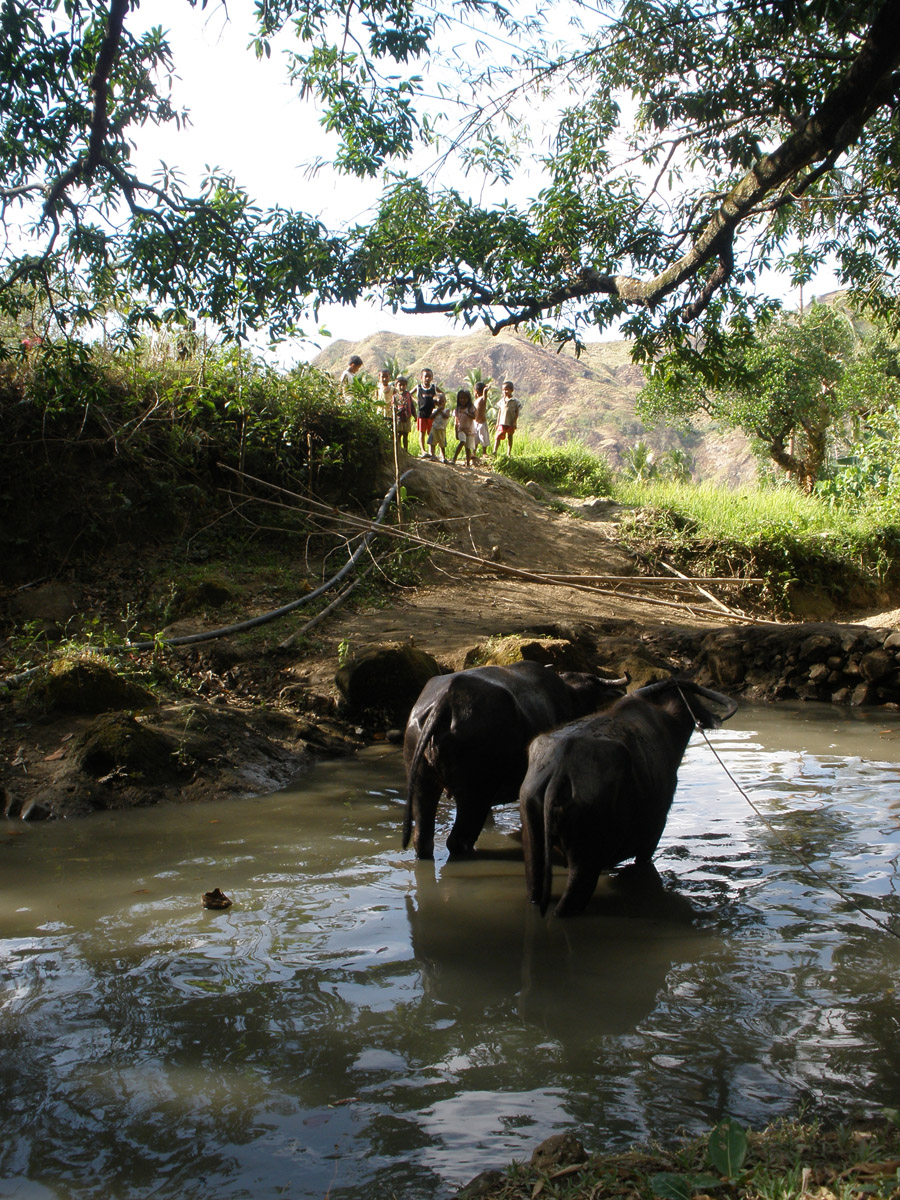
One of the things westerners are sometimes shocked by is the existence
of cock fighting, called Sabong, in the Philippines. You see pens
in the front yards of many rural homes with the roosters inside. And
every little boy has his favorite rooster that he raises for about two
years in preparation for the blood sport. Can you believe that
only in 2008 was cockfighting made illegal in Louisiana in the US!

Our botanical entourage
caused quite a stir in this little village that we visited on our way
to the field site. I kept thinking, "why aren't these kids in
school today?" When the cameras come out, the kids all start hamming it
up and posing.
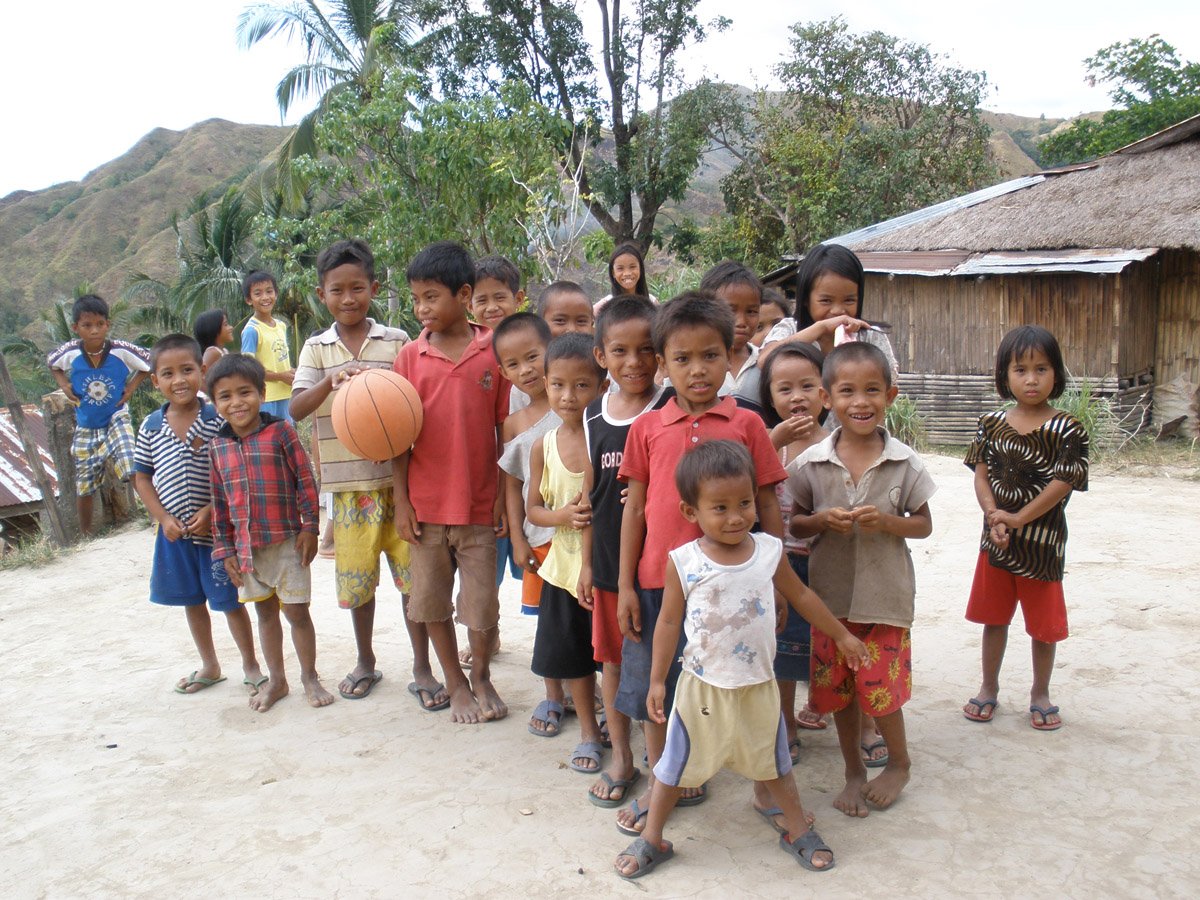
While resting and
rehydrating, a very red-faced and sweaty Dan decided to see what these
kids knew. I started drawing pictures of various animals to see
if they knew the English words for them. Overall, they did quite
well. English is taught in the schools across the Philippines. Given
the lack of understanding of basic environmental science we encountered
on the hike up, I couldn't help but think how an early childhood
education program could be started to help the next generation become
better land stewards.
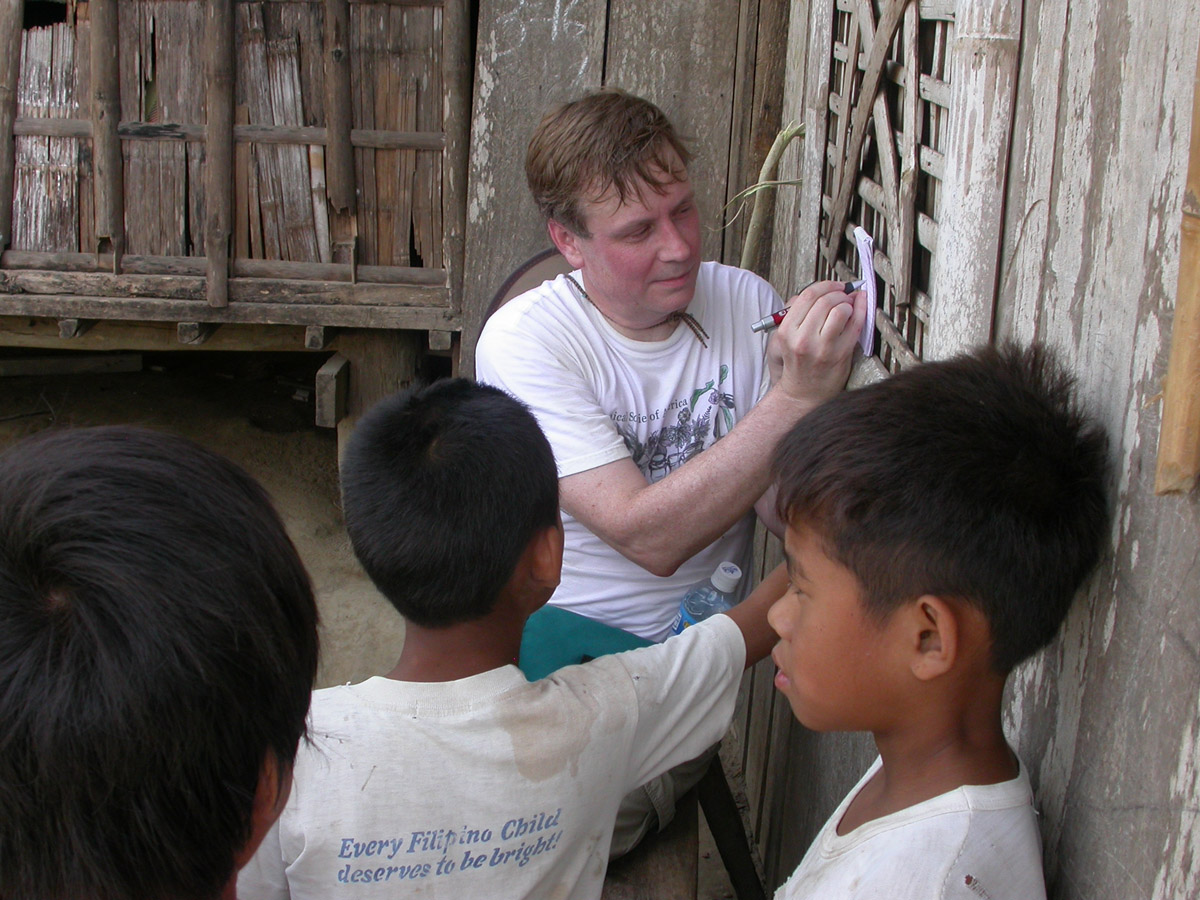
Curious onlookers - or is this my classroom? They seem much more attentive than my university General Botany undergraduates!
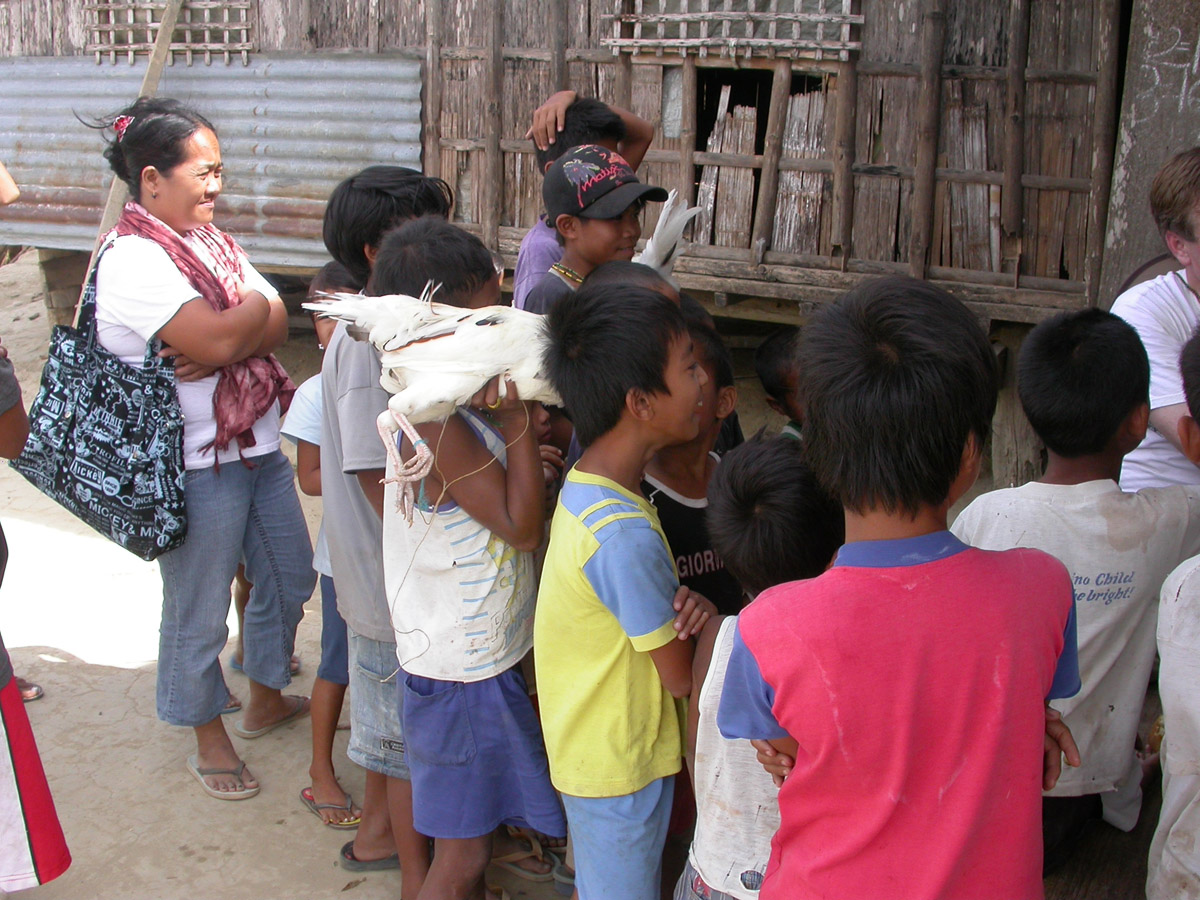
At one of our collection sites we found what we were looking for - Rafflesia speciosa.
The plants were only present as flower buds, but that was OK because it
was this stage that we needed for our DNA work. I was a bit
disappointed that we did not see a flower fully open (see next photo).
Open flower photo (c) taken by the late Leonardo Co in 2006 from
the same locality.
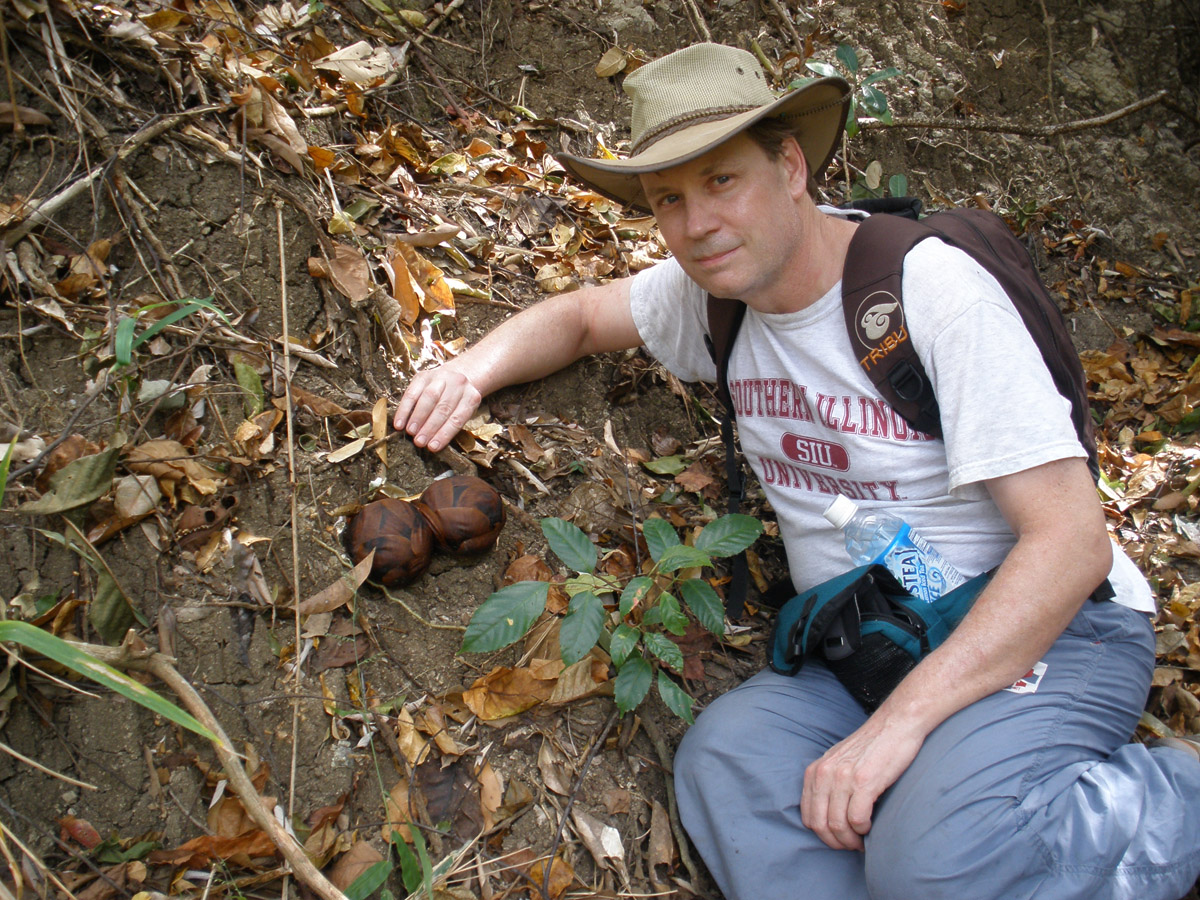
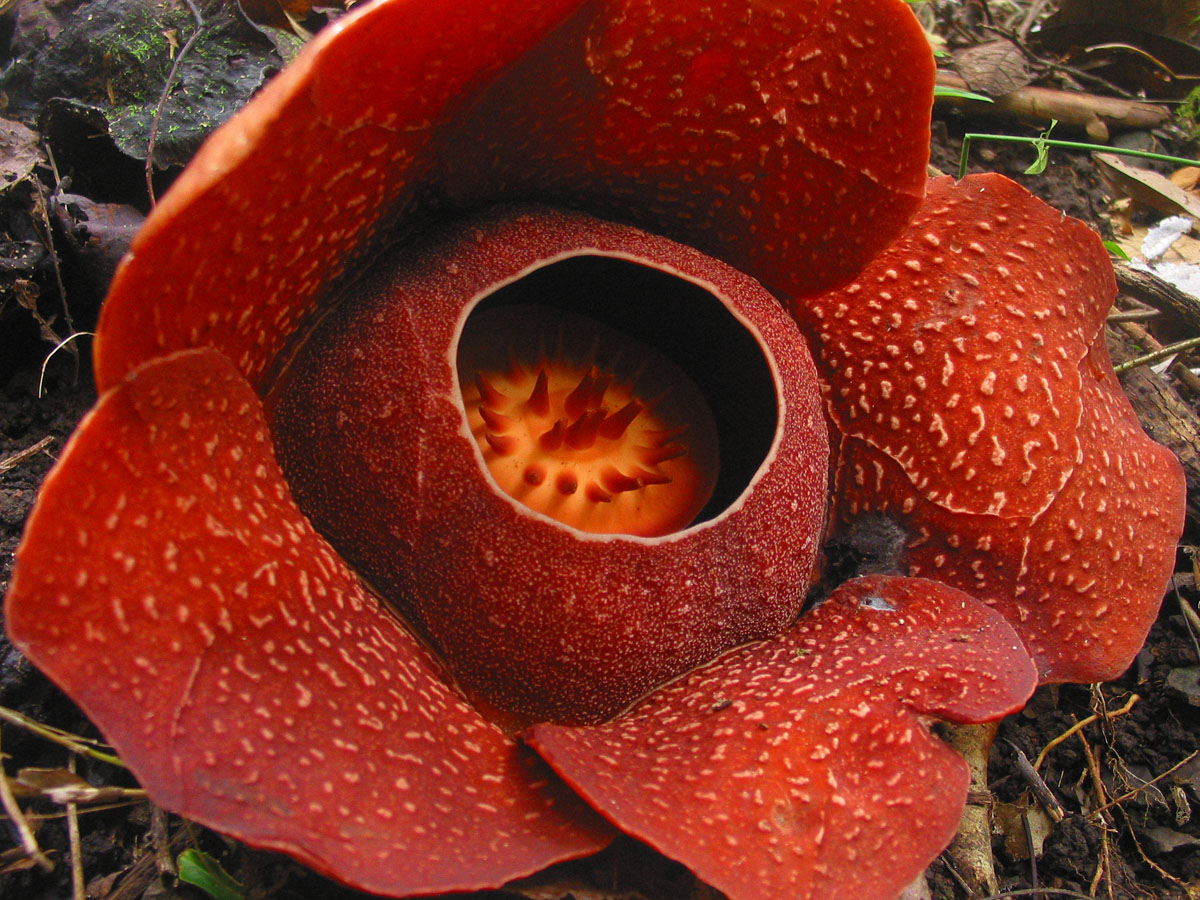
This shows Pieter and helpers
starting to set up camp. The warm and humid conditions always make
things a bit more uncomfortable. And you always must be prepared for rain.
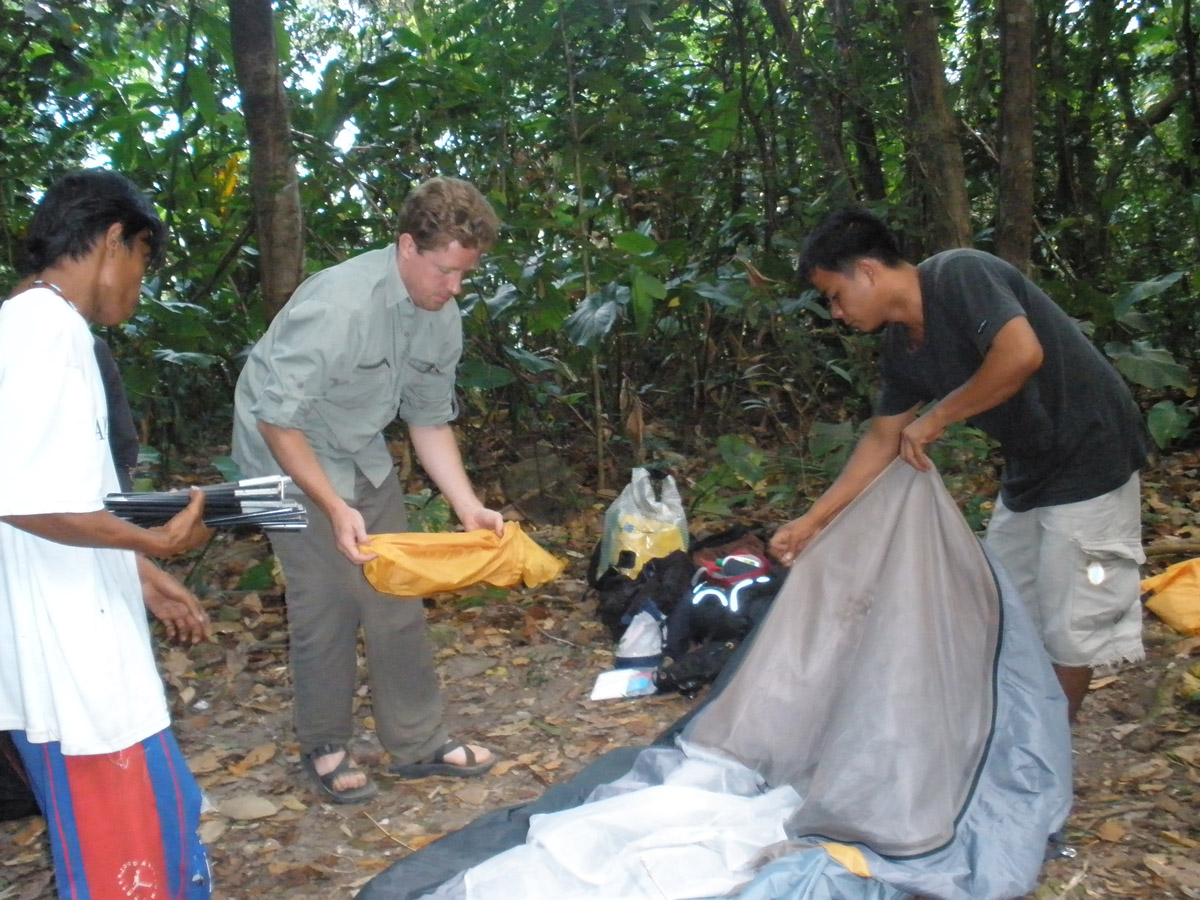
This little beauty (Dendrelaphis caudolineatus)
watched as we set up our camp in his neighborhood. The
Philippines does have venomous snakes, such as cobras and pit vipers,
but this guy is not one of those.

On several occasions local people
offered us a refreshing drink of coconut milk. Coconuts (called
buko) are ubiquitous, at least at lower elevations, and are extremely
valuable because so many parts of the plant can be used for food,
fiber, and construction. Try the buko pie if you are ever in the
Philippines!
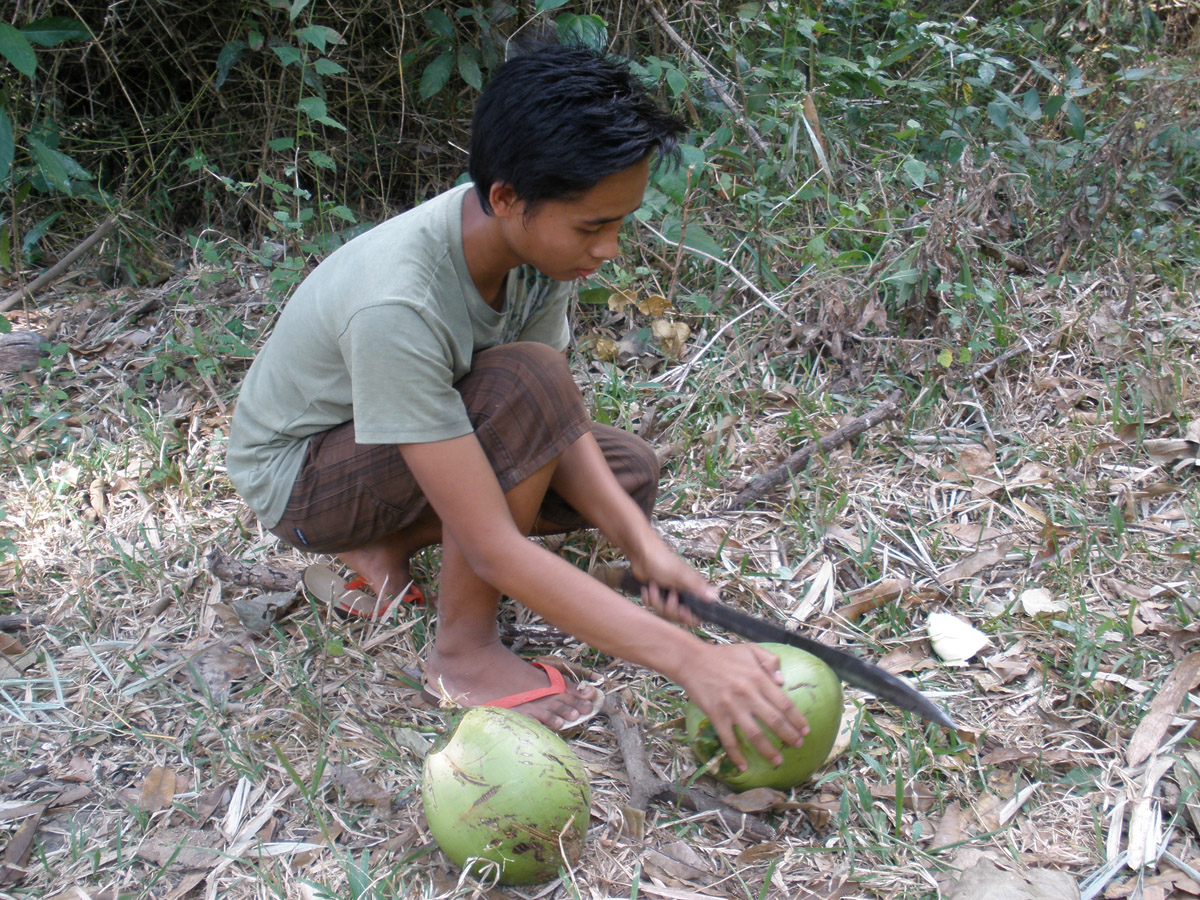
A rainbow of hope for a land with so many mouths to feed and incredible biodiversity.
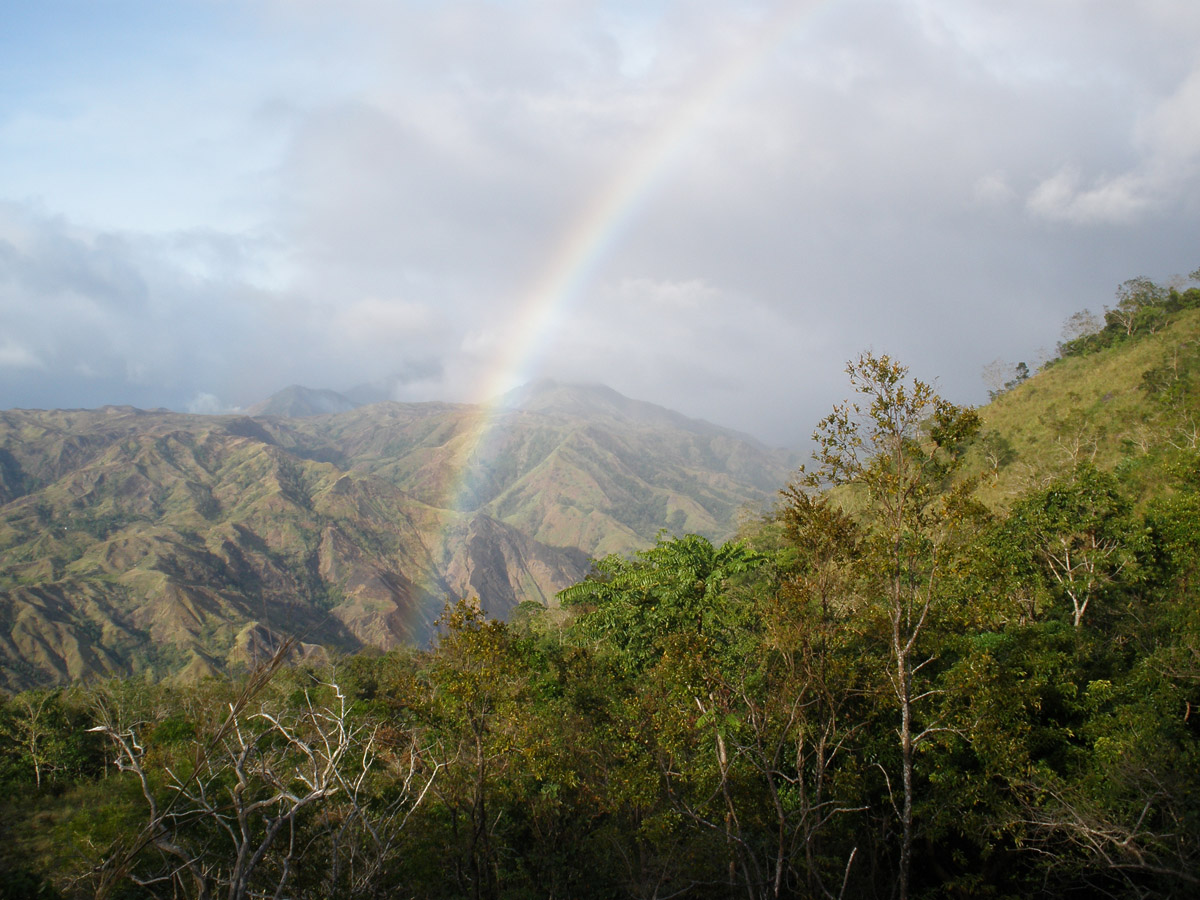
Constructed 1 July 2017 dln

